Day: February 19th, 2007
The Linden Place
There is no shortage of excellent dimsum places in Flushing’s Chinatown, but with J and J in town for the Chinese New Year weekend, Mom and Dad wanted to try someplace special. Or at least someplace different. That place was The Linden Place.
The restaurant space once housed a 25,000 square foot warehouse, nestled along a dreary stretch of road lined with parking lots and auto glass repair shops, a couple blocks east of the Van Wyck Expressway. Today, The Linden Place is one of the largest catering halls in the area. As we pulled up to the parking lot, we could not miss the fancy attempt at an entrance, featuring a banner frieze emblazoned with the restaurant name in Gothic font, and a set of similarly imprinted stairs leading up to the heavy double doors. Not my taste, but knowing that such weirdly gaudy touches will sometimes pass as shorthand for “upscale” in Chinese restaurants, I was willing to keep an open mind. But nothing could have prepared us for what lay within.
All I could say was: Yikes.
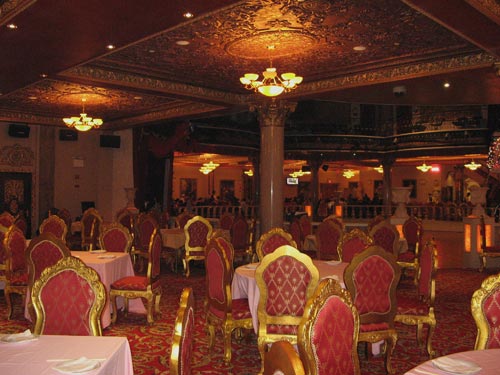
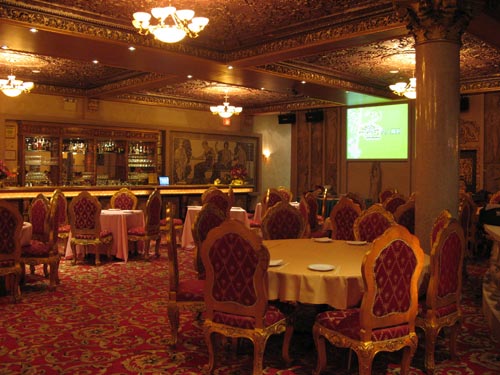
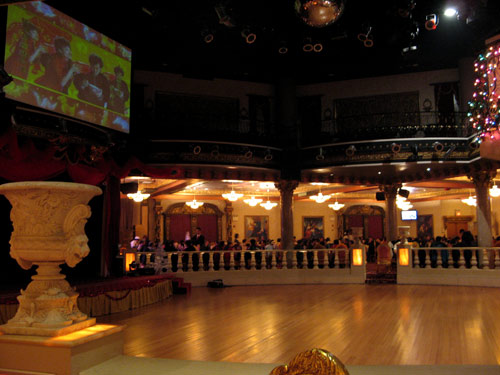
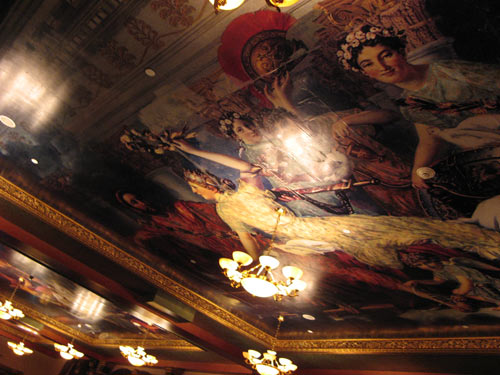
Inside was a gold-red explosion of faux tapestries, gilt-framed “paintings,” granite pillars, pasted-on ceiling “murals,” hollow resin-cast statues and urns… and the pièce de résistance, a disco-balled dance floor, over which perched a huge projection screen and Juliet terraces strung with multi-colored Christmas lights.
I’ll say it again: Yikes.
Dad explained that the aesthetic was probably a misguided attempt to recall the glamorous, colonial-era Shanghai, with its meshing of European-style décors. In the years following the end of the Opium War, enclaves — concessions — of the city housed concentrations of British, French and Americans (also Japanese, Germans, and to a smaller extent: Italians, Belgians, Russians and Austro-Hungarians) who built up the area in the styles of their homeland. With the treaty-mandated opening of the city to European trade, Shanghai’s foreign population grew from 10,000 in 1910 to 60,000 by 1940. It was during this period that the great buildings that still line the Bund were erected. Once the most famous street in Asia, the Bund is comprised of 52 buildings of varying architectural style, including Art Deco, Gothic, Baroque, Romanesque, Neo-classical, Renaissance – though I would venture, never all at the same time, as on display here.
The over-the-top décor, though, was incidental to our lunch, and if nothing else, it served as a topic for animated table conversation. Together, we toasted in the Year of the Pig with dimsum (which was fine, but pricy) and J’s favorite nian gao — Chinese New Year sticky cakes.
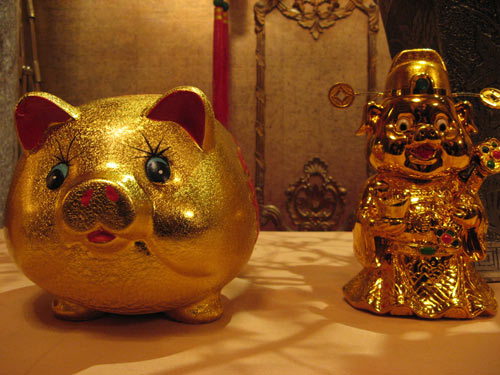
Search
Popular Tags
Categories
Archive
- July 2010
- July 2009
- January 2009
- November 2008
- September 2008
- August 2008
- July 2008
- June 2008
- May 2008
- April 2008
- March 2008
- February 2008
- January 2008
- December 2007
- November 2007
- October 2007
- September 2007
- August 2007
- July 2007
- June 2007
- May 2007
- April 2007
- March 2007
- February 2007
- January 2007
- December 2006
- November 2006
- October 2006
- September 2006
- August 2006
- July 2006
- June 2006